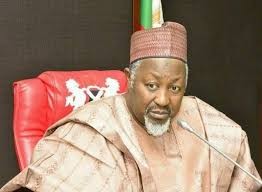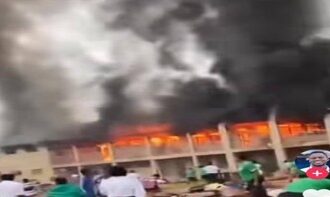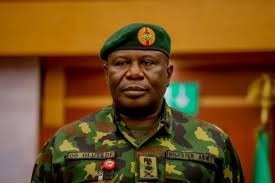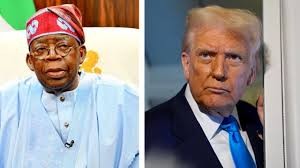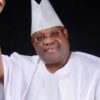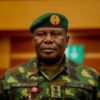With Anambra state’s governorship election set for November 8, 2025, political dynamics centre on party strategy, voter expectations, and institutional credibility. This election serves as an important assessment of democratic stability in the South-East and indicates whether future governance will effectively address ongoing economic, social, and security issues. Before the 2025 Anambra state governorship election,
With Anambra state’s governorship election set for November 8, 2025, political dynamics centre on party strategy, voter expectations, and institutional credibility. This election serves as an important assessment of democratic stability in the South-East and indicates whether future governance will effectively address ongoing economic, social, and security issues.
Before the 2025 Anambra state governorship election, the Independent National Electoral Commission (INEC) announced that 16 political parties would participate in the election. There are 16 candidates in total, consisting of 14 male and 2 female aspirants.
Among these numbers, Anambra State has three principal political parties that will compete against the incumbent governor, Charles Soludo Chukwuma of the All Progressives Grand Alliance (APGA), who is seeking a second term as governor.
Other candidates include Ukachukwu Nicholas of the All Progressives Congress (APC), Moghalu George Nnadubem of the Labour Party (LP), and Ezenwafor Jude of the People’s Democratic Party (PDP).
Party Dynamics Ahead of the Gubernatorial Poll
Party dynamics show how candidates can win the 2025 Anambra governor election.
APGA
APGA has maintained strong grassroots support and emphasised continuity, helping it keep loyal voters in regions with established voting patterns. The party has dominated the state since 2003 by leveraging its local networks and reputation.
Labour Party
The Labour Party (LP) has become a major force in urban areas, driven by youth involvement and Peter Obi’s ongoing influence, which could affect voter preferences. In the off-cycle Abia governorship election, Alex Otti, Labour Party’s candidate, was able to coast home to victory and has given a good account of himself and the Party thus far.
The PDP
The Peoples Democratic Party (PDP) has played a significant role historically and once ruled in the State. It is, however, currently experiencing internal divisions, which may weaken its capacity. Some of its members have opted to join the ADC coalition. However, its established networks continue to be strategically relevant in key wards.
The APC
The All Progressives Congress (APC) pledges federal aid and infrastructure upgrades but faces scepticism in a region long resistant to its influence. Beyond that, the APGA structure in the State appears to have struck a deal with the government of President Tinubu on the election, a factor that may potentially affect the chances of the APC candidate.
Challenges Ahead
Several factors, informed by past election records, are expected to influence the conduct and outcome of the election.
Factors that have impeded the effectiveness of previous elections include issues related to security, logistical challenges, technical faults with accreditation devices, delays in the distribution of materials, and prevalent voter apathy.
Insecurity: Sporadic violence and separatist-related activity continue to pose a threat, particularly in rural areas, potentially deterring voter participation and influencing turnout.
Low Voter Confidence: Lessons from 2021 indicate that logistical failures such as late arrival of materials, malfunctioning accreditation devices, and opaque collation processes can erode trust in the process.
Vote Buying and Money Politics: This remains an entrenched practice that can distort electoral outcomes, particularly in rural wards where traditional structures wield major influence.
Urban-Rural Divide: While urban voters are increasingly influenced by reformist messaging and digital campaigns, rural communities continue to rely heavily on town unions, religious institutions, and local leaders, creating asymmetrical campaign dynamics.
These weaknesses highlight the fragile trust between citizens and electoral institutions, a factor that will influence both turnout and perceived legitimacy in 2025.
What to Expect in 2025
Analyst Abiodun Okeniyi suggests that the election outcome will depend on a combination of turnout, candidates’ credibility, and party operational capacity.
“A well-managed election with effective security, functional accreditation devices, and timely delivery of materials could energise voter participation and provide a fair reflection of citizen choice. Conversely, if logistical failures or security lapses occur, low turnout and contested results may undermine legitimacy.”
“The interplay of urban enthusiasm for reformist messaging, rural reliance on traditional political structures, and APGA’s entrenched grassroots machinery creates a highly competitive environment. Turnout will be pivotal; candidates that successfully combine policy-driven messaging with strong, ward-level mobilisation are likely to outperform expectations, while those relying solely on reputation or federal support may struggle.” He added.
“Ultimately, Anambra 2025 is a test of political maturity and institutional credibility. It is as much a measure of democratic health as it is a contest for power. The election will reflect whether voters can trust the system to deliver transparent, credible results, and whether political parties and candidates can address long-standing governance and developmental challenges”.
Past Anambra State Election Results
In 2003, APGA won its first governorship with Peter Obi, establishing the party as a dominant regional force. In 2007, it retained power despite controversies and legal challenges over the results.
Between 2010 and 2021, APGA was the ruling party in Anambra State. The outcome of the elections shows that the electorate’s turnout fell below 11%, reflecting insecurity, apathy, and logistical failures.
These patterns suggest that while APGA holds structural advantages, voter turnout, opposition mobilisation, and candidate appeal will be decisive in shaping the 2025 outcome.
Meanwhile, some analysts anticipate several plausible scenarios for the November 2025 election. If turnout is robust and urban and rural voters are effectively mobilised, the Labour Party could make significant inroads, particularly among young, reform-minded constituents, potentially challenging APGA’s dominance in key wards.
Background of Anambra Elections
Established in 1991, Anambra State is known for its political activity, high voter turnout, engaged civil society, and active party competition.
Governorship elections in Anambra are traditionally shaped by local coalitions, zoning arrangements among the three senatorial districts, and each party’s capacity to mobilise support at the grassroots level.
Since 2003, APGA has led the governorship, but elections are often complicated by legal battles, low voter turnout, and security issues, revealing ongoing tensions between continuity and reform in the South-East. Off-cycle and by-elections challenge the state’s electoral system, with INEC’s transparency and logistics remaining crucial.
The election is expected to be competitive, with results depending on how candidates tackle logistical, security, and voter engagement issues and persuade citizens that their votes matter.


